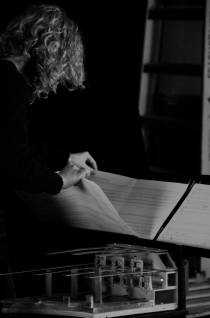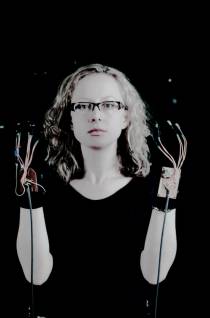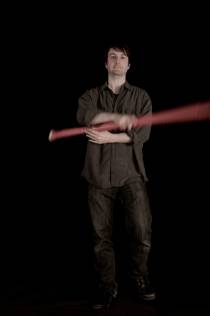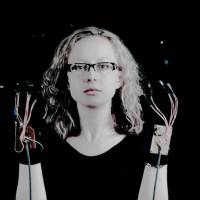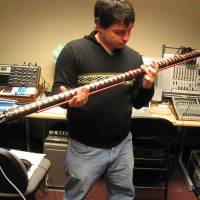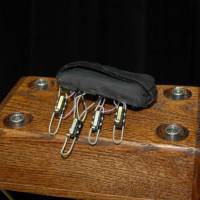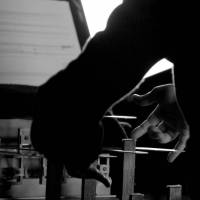The McGill Digital Orchestra
| Participants: |
Joseph Malloch Stephen Sinclair Mark T. Marshall |
David Birnbaum Rodolphe Koehly Marcelo M. Wanderley (supervisor) |
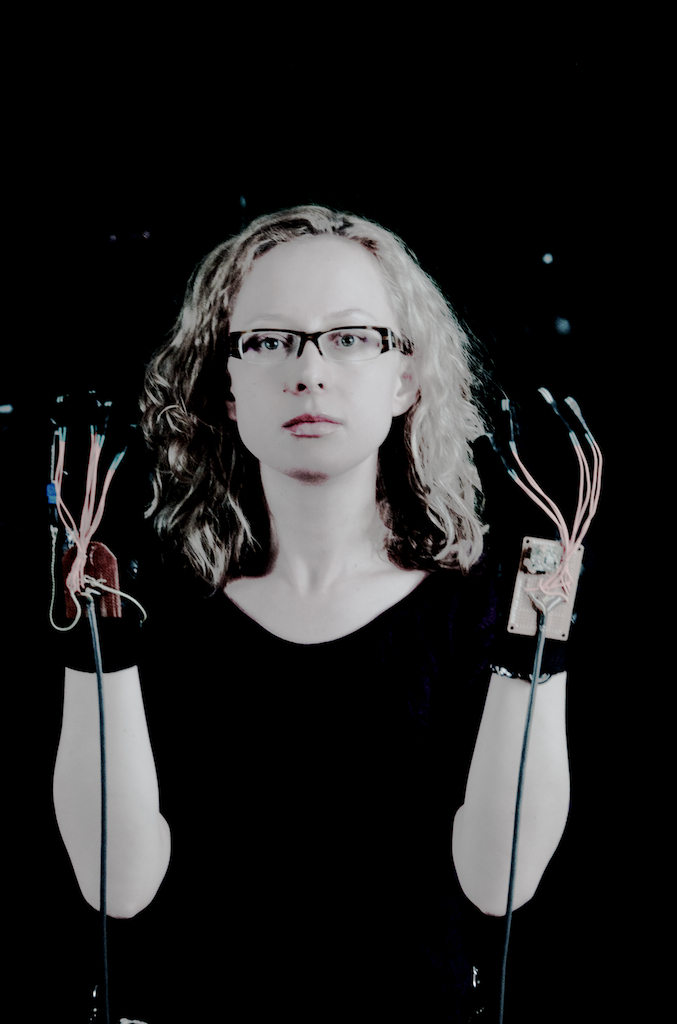
|
|---|---|---|---|
| Collaborators: |
Bertrand Scherrer (SPCL) Philippe Depalle (SPCL supervisor) Simon de Leon (CAML) Gary Scavone (CAML supervisor) D. Andrew Stewart (DCS) Heather Hindman (DCS) |
Sean Ferguson (DCS supervisor) Fernando Rocha Xenia Pestova Erika Donald Chloé Dominguez Kent Walker (Sound Recording) |
|
| Funding: |
Fonds québécois de la recherche sur la société et la culture (FQRSC) Centre for Interdisciplinary Research in Music Media and Technology (CIRMMT) |
||
| Project Type: | Collaborative Project | ||
| Time Period: | Sept. 2005–March 2008. (Completed.) | ||
Project Description
The current proliferation of new musical applications of digital technologies is comparable to the flourishing of new instruments that accompanied technological developments during the Industrial Revolution. In the 19th century these advances led to the appearance of, for example, the saxophone, the Wagner tuba and the modern Boehm flute. The objective of the Digital Orchestra research-creation program is similarly to develop new creative resources that allow composers and performers to expand and renew their artistic practice through the interaction of live performance and digital technologies, and to utilize these tools in the composition and performance of a number of new works in a concert given by the McGill Contemporary Music Ensemble as part of the 2008 MusiMarch Festival. These works will be composed by members of the research-creation team and by graduate students in composition. We will attempt to find innovative musical solutions to the significant aesthetic, compositional and performance-practice challenges associated with the integration of live performers and technology. In doing so, we hope to encourage the development of new means of expression for creative and interpretive artists.
Goals
The Digital Orchestra will be a collection of software and hardware tools dedicated to enabling the performance of works incorporating live performers with digital technology. The proposed program will add value to the activities of the participating research-creators and researchers in performance, composition and music technology by establishing a functional, practical resource for the creation and performance of musical works that include a digital performance element. We hope to find generalized solutions to technical issues that will allow musicians who are not experts in computer technology to access these resources. At the same time, the Digital Orchestra will serve as a real-world testing ground for advanced research in gestural control and digital signal processing and sound synthesis.
It is not our objective to replace traditional orchestral instruments. Rather, we wish to find avenues for the continued development of performance practice for these instruments and to allow advanced performers to use new music technologies that have been designed to take advantage of their many years of artistic practice.
Approach
The approach to be used in the Digital Orchestra is based on real-time digital information from a performance. Two types of information may be used: digital audio (representing the sonic output of an instrument) and gestural control data (representing the performance gestures of the instrumentalist). Both of these types of information may be thought of as signals that can be reproduced, stored, analyzed, recreated and/or transformed. This information may be gleaned from two paradigms of performer/instrument interaction: musical instruments, either acoustic or electric, that generate an audible sound, and gestural control surfaces, either modeled on traditional instruments or based on alternative models, that do not generate an audible sound. In the latter paradigm, the production of musical sound relies exclusively on the mapping of gestural data to the control parameters of a digital synthesis algorithm. In the former, the digital signal sampled from a transducer may be transformed using digital signal processing techniques in order to create new sonic results.
The capture of gestural data may be achieved either directly or indirectly. Direct acquisition of gestures involves the use of sensors that transmit information describing performance gestures to an interface that translates the data to an appropriate digital format. Normally a number of different types of information are required to adequately represent a performance. In the case of a gestural controller based on a woodwind instrument, for example, parameters might include breath pressure, embouchure tightness and fingering. These streams of data may then be mapped to the control parameters of a digital synthesis algorithm, such as physical modeling or granular synthesis. This algorithm might be designed to recreate the sonic characteristics of a woodwind instrument. It might also be designed to interact with the gestural information to generate completely new sonic results not related to the sound of an acoustic woodwind instrument.
Indirect acquisition of gestural data requires the analysis of a digital audio signal in order to extract information about performance gestures. One of the most crucial (and problematic) types of information that may be captured through analysis is the pitch being performed. Another approach involves the analysis of instrumental timbre to determine, for example, the plucking location of a guitar string. An important aspect of this project will be the evaluation of the myriad of current models of indirect acquisition to determine which are most effective and reliable in different performance contexts and for different instruments.
Implementation
The implementation of the Digital Orchestra will take place in three distinct stages, each of which is planned to take one year:
- development of a large number of working prototypes
- refinement of selected prototypes in order to create highly-functional, expressive musical instruments, software tools and techniques
- composition and performance of works using the tools of the Digital Orchestra.
Instruments
Media
Publications
- Sean Ferguson and Marcelo M. Wanderley. ”The McGill Digital Orchestra: An Interdisciplinary Project on Digital Musical Instruments”. Journal of Interdisciplinary Music Studies, 4(2):17-35, Fall 2010.
- Xenia Pestova, Erika Donald, Heather Hindman, Joseph Malloch, Mark T. Marshall, Fernando Rocha, Stephen Sinclair, D. Andrew Stewart, Marcelo M. Wanderley, Sean Ferguson. “The CIRMMT/McGill Digital Orchestra Project.” In Proceedings of the 2009 International Computer Music Conference (ICMC09).
- Mark T. Marshall, Joseph Malloch and Marcelo M. Wanderley. “Non-Conscious Control of Sound Spatialization..” In Proceedings of the ENACTIVE'07 Conference, Grenoble, France, Nov. 2007.
- Joseph Malloch, Stephen Sinclair, and Marcelo M. Wanderley. “From controller to sound: Tools for collaborative development of digital musical instruments.” In Proceedings of the 2007 International Computer Music Conference, Copenhagen, Denmark.
- Mark T. Marshall, Joseph Malloch and Marcelo M. Wanderley. “Gesture Controlled Sound Spatialization for Live Musical Performance.” (abstract) Presented at the 2007 International Gesture Workshop, Lisbon, Portugal.

